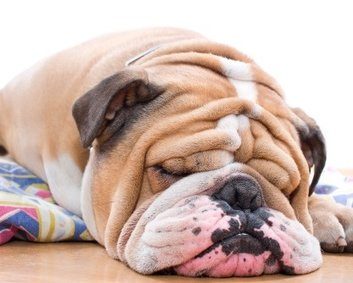Is your pet at risk for obesity?
Do you have a paunchy pooch or a fat cat? Protect your pet from health problems by ensuring they’re at a healthy weight. Here’s how

Source: Best Health magazine, January/February 2014; Image: Thinkstock
An estimated 60 percent of Canadian pets are obese or overweight, says Dr. Jim Berry, a veterinarian in Fredericton, N.B., and president of the Canadian Veterinary Medical Association. This puts them at risk for health problems including type 2 diabetes, cancer, digestive problems, mobility difficulties, heart issues and, possibly, premature death.
According to Berry, excessive weight gain in pets is often caused by too much food and not enough physical activity. (Sound familiar?) According to Canada’s 2011 Pet Wellness Report, just 18 percent of pet owners feed their animals the recommended amounts. And all that excess food isn’t being burned off with exercise; on an average weekday, pet owners spend three times as much time watching TV as they do playing with their dogs or cats.
Cats and dogs at a healthy weight should have an hourglass shape when viewed from above. ‘The widest point should be at the last rib, or roughly the middle of the body,’ says Berry. ‘He should get narrower toward the waist, and then bigger again at the hips’at the iliac crest, which is the bony prominence in front of the hip joint.’ Feeling his ribs is another way you can tell; when you touch his sides, if you can’t easily detect his ribs, and feel only a layer of fat, he’s not at a healthy weight and you should speak to your vet.
The first step is to rule out conditions that can cause weight gain, such as thyroid problems or arthritis. If your pet is in the clear, your vet will set up a slow weightreduction plan. ‘Drastic weight loss programs for pets can be dangerous, especially for cats,’ says Berry. ‘Losing weight quickly can create metabolic shifts, which cause serious liver problems.’
Among the vet-approved weight loss tips: Measure your pet’s food to ensure proper portion control, and put your cat’s food into multiple bowls around your home so he has to hunt for it. (Every bit of movement helps!) And take your dog’and yourself’for a heartpumping daily walk.
This article was originally titled "Obesity and your pet" in the January/February 2014 issue of Best Health. Subscribe today to get the full Best Health experience’and never miss an issue!




